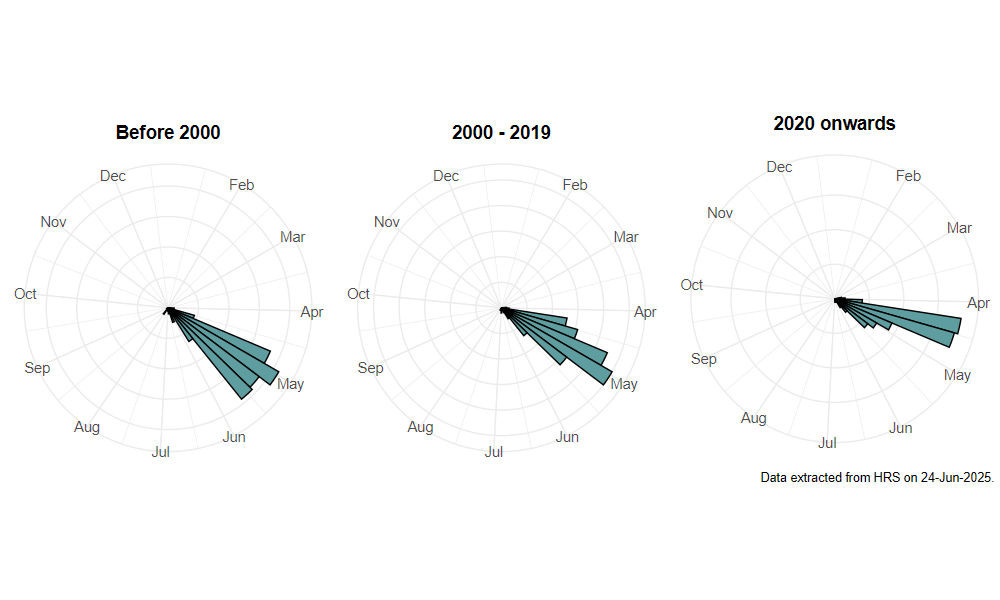Pipiza luteitarsis Zetterstedt, 1843
Identification
Identification difficulty = 2. ![]()
![]() according to Ball & Morris, 20241
according to Ball & Morris, 20241
Biology
The larva develops on Schizoneura aphids, which curl the leaves of Elm Ulmus sp. This species is associated with deciduous woodland, and adults are often found resting on foliage along the edges of rides and clearings. Males defend patches of sunlight, hovering a few metres above the ground.
Flight period
The following plots show the number of unique records per week excluding those reported to be of immature stages.

Distribution
The most distinctive member of the genus that is suited to reliable identification. It is a scarce but widespread species in the southern half of Britain, tending to be recorded more frequently from the east. Whilst its range extends northwards to southern Scotland, it is rare in the northern part of its range. Although listed by Stubbs (1982)2 as a 'good' primary woodland indicator, recent records suggest that it is not confined to ancient woodlands, and the presence of Elm may be a more significant factor.

Trends
The following plots show the Frescalo TFactor vs year and a map of the rescaled frequency (all records) for the species.